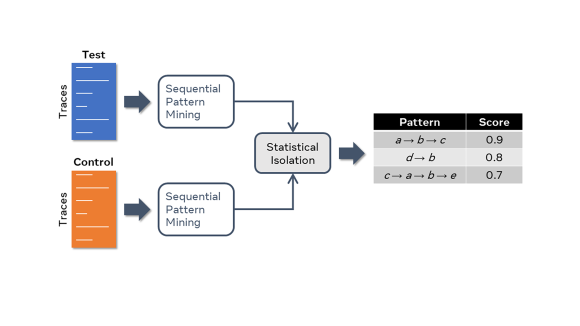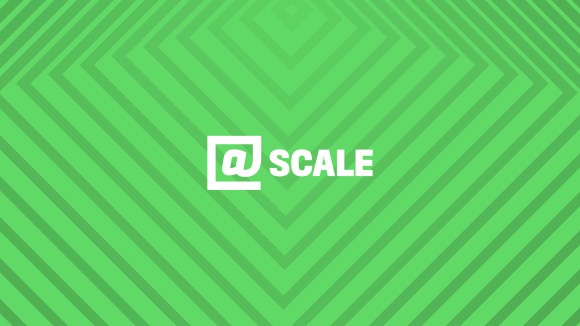Last week, more than 200 sustainability leaders convened at Facebook for the second Sustainability @Scale conference. We had a great set of participants who represented technology, apparel, retail, and financial services companies, as well as nonprofit, academic, and government organizations. There were engineers, environmental scientists, data scientists, architects, designers, and consultants openly discussing the greatest sustainability challenges that we face today and how we can better work together in the future.
Panels discussed sustainable design, the roles that renewable energy and water play in building a sustainable ecosystem, how to integrate sustainability into the supply chain, how sustainable ideas and technologies spread, and how companies and people can advance these concepts.
For those who couldn’t make it or who want to revisit the day’s content, recaps and videos of each of the sessions are below.
What Does a Sustainable Water Future Look Like? Water in the 21st Century
The day started with a keynote talk from Dr. Peter H. Gleick, co-founder and president of the Pacific Institute for Studies in Development, Environment, and Security. Gleick highlighted the critical importance of water in our lives and described how this renewable resource also has nonrenewable characteristics. He introduced the concept of “peak water,” in which the water supply in many areas has limits, and our need to find alternatives. Gleick offered a positive vision for the future based around rethinking concepts of water supply and water demand. On the supply side, we can reuse treated wastewater and harvest rainwater for many applications. On the demand side, to use less water without changing behavior, we can utilize more efficient appliances and technologies, fix leaks, and improve irrigation systems. Gleick described other strategies that can move us toward this positive vision, including integrating energy and water issues from a policy perspective, rethinking water institutions, pricing water more effectively, utilizing social outreach tools to improve public participation, and building innovative partnerships.
Sustainability in Complex Global Supply Chains
Kathrin Winkler, vice president of sustainability for EMC, moderated a panel with representatives from Verité, Levi's, Labor Link, and Flextronics. The group discussed ways in which companies go beyond the traditional audits and codes of conduct and implement programs that get to the core of worker issues, striving to improve people's lives holistically. The panel opened up to questions from the audience: Levi's suggested consolidating the total number of suppliers and using fewer, more capable vendors. The panel also emphasized the importance of creating better planning systems to allow for flexibility and increased transparency, and also discussed economically incentivizing vendors, creating a “healthy” level of competition within their supplier base. In a later point, the panel explained that we cannot wait for the consumer to demand sustainability in their products or services — it's the brands' responsibility to educate their consumers, to show them why they should care, and to “unleash” their marketing departments in the effort to convince them.
Scaling Renewable Energy Through Corporate Purchases
Quayle Hodek, CEO of Renewable Choice Energy, kicked off this discussion by describing the options available today for corporate renewable energy purchases, from onsite production to physical and virtual power purchase agreements (PPAs) to equity investments. He then moderated a panel with energy managers from Walmart, Facebook, and Salesforce — three companies that have long-term goals to power their operations with 100 percent renewable energy. Walmart described its approach to using many different deal types and technologies, with the goal to make an impact on the market and enable other companies to repeat similar deals. Salesforce provided perspective on how a smaller company that leases all data centers can meet their renewable goals. Facebook was joined on the panel by East Kentucky Power Cooperative, and together they highlighted opportunities for partnerships with utilities that are expanding renewable energy offerings. Panelists fielded questions from participants on what counts as renewable energy, the importance of proximity and additionality, how the private sector can influence policy, the grid’s capability to handle renewable energy, how renewable energy has affected the companies’ reputations, and better linking of ecological considerations and renewable energy decisions.
Thinking Outside the (Check) Box
This lively debate, moderated by Dunstan Allison-Hope from BSR, centered around whether representatives from BlackRock, PwC, HP, and Microsoft agreed (or disagreed) with the following statement: “Today’s sustainability reporting model is bloated, burdensome, and broken. Its benefits do not outweigh its costs, and it should be discarded.” While the statement was meant to be provocative and polarizing, it was noted at the beginning that the viewpoints of the debaters did not necessarily represent those of their companies. BlackRock's representative emphasized that for the investing world, reports help investors understand whether a company is a good investment, which brought to light the range of potential audiences for these reports. With so many options, each with different metrics (spanning often tens, if not hundreds, of pages), it is easy to see how some agree that the current reporting model is in fact “bloated, burdensome, and broken.” However, other debaters (such as PwC's representative) reinforced that these reports establish trust to potentially all stakeholders, who want to invest in companies that share in their values; these reports offer a way to communicate to stakeholders that the company is exemplifying and delivering on those shared values. In these cases, they said, the benefits could outweigh the costs.
Sustainability by Design
This panel, with representatives from Autodesk, IDEO, Siegel and Strain Architects, and the Biomimicry Institute, focused on the design process as a key opportunity to embed sustainability in the foundation of our built environment, products, and infrastructure. Melanie Loftus, Living Building Challenge ambassador and a member of the International Living Future Institute, began the discussion with a question about what is broken in our design system. The panel highlighted the need to think systematically considering all stakeholders and potential consequences, to tie building sustainability to what the company really cares about, to simplify the design process so companies can better understand trade-offs, and to use nature as a model in design. The discussion then moved to healthy materials and tools that can be used for design decisions. The audience asked questions about measuring success in design, real-time data for decision-making, the importance of broader context and community in design decisions, and how cities can influence action.
How Things Catch On
The day rounded out with a great discussion among representatives from ActionSprout, Change.org, SolarCity, and Facebook in this panel moderated by Lada Adamic, a computational social scientist from Facebook, which centered on how and why certain campaigns go viral. The consensus between the speakers was that there is no hard and fast rule for why certain things go viral, such as the ALS Ice Bucket Challenge. It's difficult to predict whether a message will spread, or how, so they advised trying out ideas until one catches on. The panel recommended that we look to others to learn what worked well in the past, and then tailor that approach for our own target audience.











